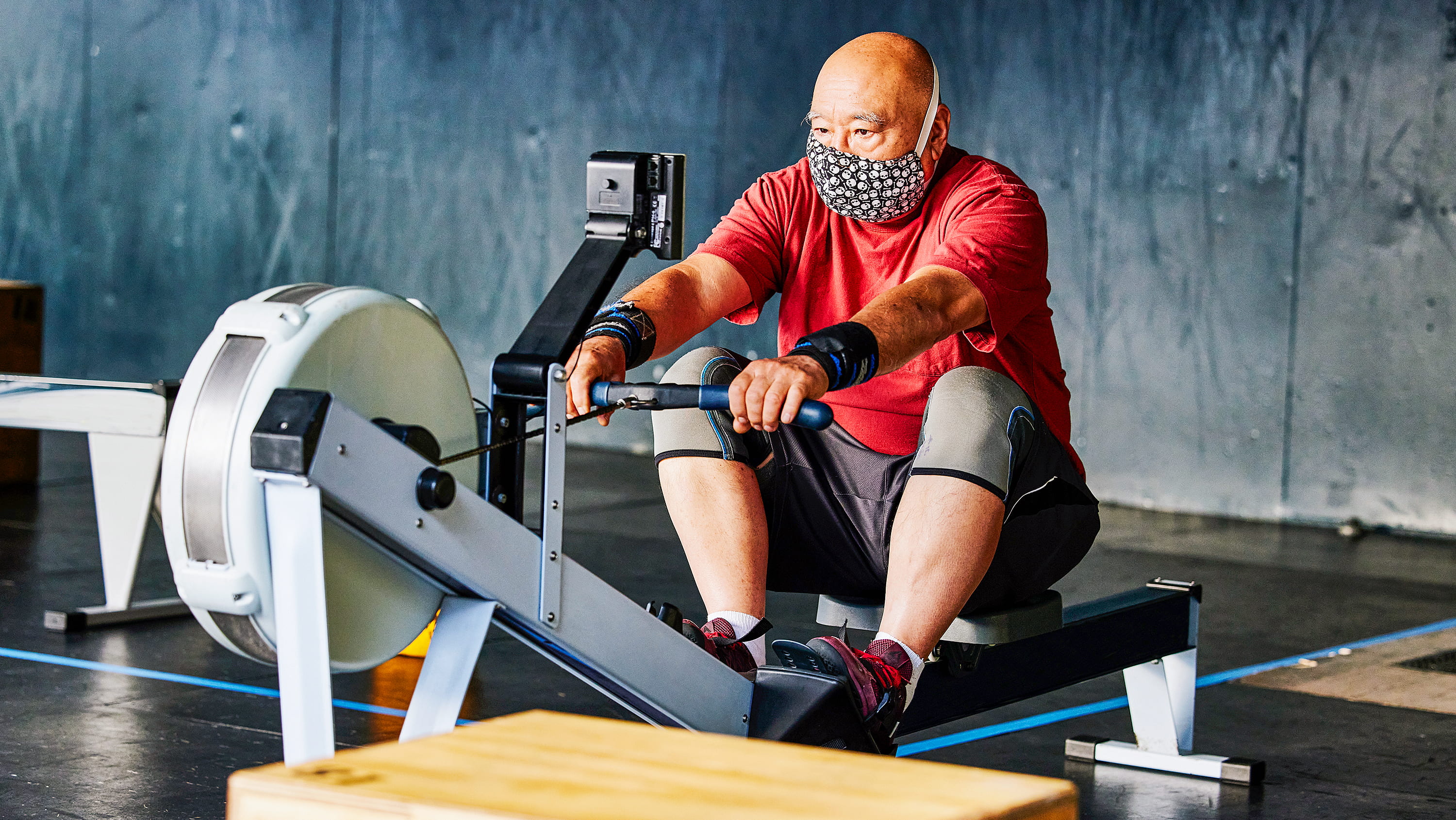Not only does the COVID-pandemic practice of wearing a mask while exercising indoors help protect us from viruses, it can improve lung function, according to a University of Alberta study that unmasks the surprising effects of increased exertion in dry environments.
“One of the questions that surfaced during COVID was, ‘When you wear a mask for protection from viruses, does a mask affect physical activity effort for breathing and overall intensity?’” says Michael Kennedy, an exercise physiology professor in the Faculty of Kinesiology, Sport, and Recreation. “We wanted to understand whether a basic cloth mask had any negatives or benefits beyond reducing virus transmission and contagion risks during exercise.”
For the study, Kennedy’s team had study participants run on a treadmill because this is by far the most popular type of aerobic exercise in a fitness centre. The researchers measured lung function using handheld spirometers — devices participants blow into — during and after exercise, both with and without masks.
The data revealed that mask wearers experienced less reduction in forced expiratory volume (FEV1), which is the amount of air a person can forcibly exhale from their lungs within the first second of exhaling, compared with their unmasked counterparts. This indicated less constriction in the airway, called bronchoconstriction, which can occur with high breathing rates in dry air.
“The findings suggest masks may be beneficial during indoor exercise in dry environments, as they improved lung function and also reduced post-exercise symptoms like cough, wheezing and tightness in the throat,” Kennedy says, noting that none of the participants had an extensive history of asthma or exercise-induced asthma, so these findings are applicable to most people who exercise.
The reason a mask — whether cloth or surgical — helps reduce lung constriction, according to Kennedy, is that it traps moisture, which can be used to humidify the air on the next breath. Kennedy explains that with every breath, the lungs must warm the air to body temperature (37 C) and humidify it to 100 per cent.
“If we're going to have gas exchange occur and get oxygen into our bodies, the air has to be both humidified and warm,” he says. “With a mask on, you’re able to humidify the air more effectively, which reduces stress on the lungs and minimizes constriction.”
Kennedy adds, “Even though we think indoor temperatures are fairly warm and comfortable for exercise, our lungs still have to do a lot of work to humidify the air, because Edmonton and Alberta are so dry.”
The team also examined whether wearing a mask reduced exercise-induced asthma. They focused on the 20 to 30 minutes after exercise, when the lungs tend to constrict the most and adverse symptoms emerge.
Though the benefits were clear, Kennedy notes there was an intensity threshold beyond which most participants began to feel that the mask was constricting. However, this limit occurred at the higher end of the intensity spectrum. For example, activities like brisk walking, hiking, indoor biking or spin classes, and aerobics would all fall within the comfort zone.
“What we would call hard or vigorous exercise — where your breathing rate increases and becomes noticeable — is where some participants started to feel the mask might be constricting, such as a really hard hockey shift or intense indoor soccer game,” he says.
Kennedy’s previous research has focused on the effects of cold air on the lungs. In earlier studies, he found that exercising without a mask or scarf in temperatures below -10 C puts undue stress on your lungs.
He explains that when temperatures drop, the air becomes devoid of moisture, forcing the lungs to work extra hard to humidify each breath. Over time, lung function can gradually deteriorate, especially during exercise, so watching your exercise intensity and wearing a mask both indoors — if you are prone to airway constriction, wheezing or coughing — and outdoors in extremely cold air can help you “love your lungs,” Kennedy says.
